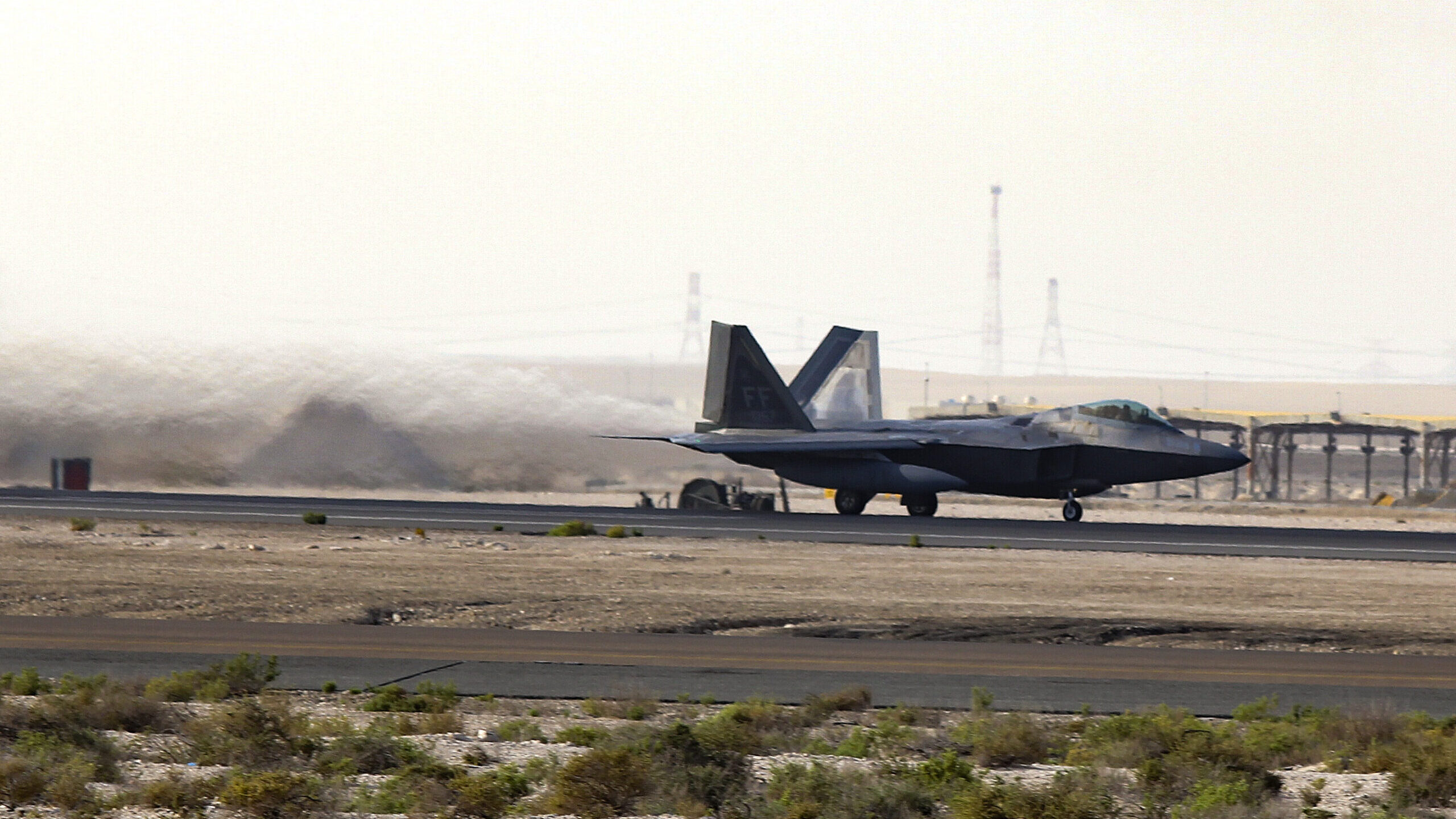
An F-22 Raptor takes off from Al Dhafra Air Base, United Arab Emirates, Feb. 21, 2022. (U.S. Air Force photo by Master Sgt. Dan Heaton)
WASHINGTON — Lawmakers on the House Armed Services Committee would once again block the Air Force’s bid to retire older F-22 Raptor fighter jets, a setback for service officials who sought to repurpose the fighter’s sustainment dollars to fund its next-generation successor.
Text of Armed Services Chairman Mike Rogers’ markup [PDF] of the fiscal 2024 defense policy bill further indicates that the committee would cut all funding for the Air Force’s troubled Air-launched Rapid Response Weapon (ARRW).
The Air Force sought permission to retire 32 Block 20 Raptors in FY24 that service officials emphasized are not combat-coded, a move Congress blocked last year. Despite confidence from the service’s top civilian that the divestments would finally be granted, House authorizers would still not permit them, according to a senior committee aide.
The “FY23 prohibition on retirements for F-22’s still stands,” the aide told Breaking Defense. “Members view that the F-22 proposal is problematic because the Block 20 is combat capable depending on the threat environment; our most advanced F-22, the Block 30/25 aircraft, would then be required to absorb the training pipeline workload, adding unnecessary wear and tear to our most combat-capable fleet and very small fleet of remaining F-22s.” the aide explained.
Additionally, the Next Generation Air Dominance fighter that’s set to replace the Raptor “is still many years away from fielding and in its earliest stages of development,” the aide said. Last month, the Air Force kicked off the competition stage of that program, and has said it will select a contractor in calendar 2024.
According to a legislative proposal submitted by the Air Force [PDF], approximately $400 million could be saved annually between FY24 and FY27 and under $200 million in FY28 if the fighters are junked, money that the service instead repurposed for NGAD. Lt. Gen. Richard Moore, Air Force deputy chief of staff for plans and programs, warned in April that if the divestments are blocked — and additional funds are not appropriated to maintain the fighters — “there’ll be a half-a-billion dollars of something that won’t get done.
“Perhaps it’ll be NGAD. Perhaps it’ll be munitions. Perhaps we’ll stand down the F-22 fleet,” he said.
Providing political cover for the members opposing the F-22 retirements is the announcement today that F-22s from the 94th Fighter Squadron are being deployed to US Central Command, specifically as a deterrent to “unsafe” interactions with Russian pilots.
Quivering ARRW
After back-and-forth between Air Force officials on the fate of the ARRW program — with the service’s acquisition czar suggesting it would end in the upcoming fiscal year after finishing out planned testing, only for the service’s secretary to say a month later its future was still undecided — House authorizers would leave little doubt by zeroing its budget in FY24.
Specifically, the Air Force sought $150 million R&D funds in FY24 for ARRW to complete the program’s all-up-round testing, which service officials have described as critical to evaluate the fast-flying weapon’s performance. Denying those funds would truncate the testing and could effectively shutter the program after the current fiscal year, assuming the Air Force does not resume testing in a future budget cycle or go on to procure the ARRW from manufacturer Lockheed Martin.
Provisions for the F-22 and ARRW could still change as the full committee debates the legislation, which must then be approved by the House and negotiated with their counterparts in the Senate. Appropriators in the House and Senate could also further alter the outcome, such as by appropriating extra funds for F-22 sustainment or continued testing for ARRW. (The appropriations committee is set for its markup of the defense spending bill on Thursday.)
But during a hearing in March, the chair of the House Appropriations defense subcommittee expressed skepticism about the ARRW program, raising doubts about its continued funding.
“I don’t like to call it [research and development] welfare,” Rep. Ken Calvert, R-Calif., said, “but it seems to go on forever.”






















